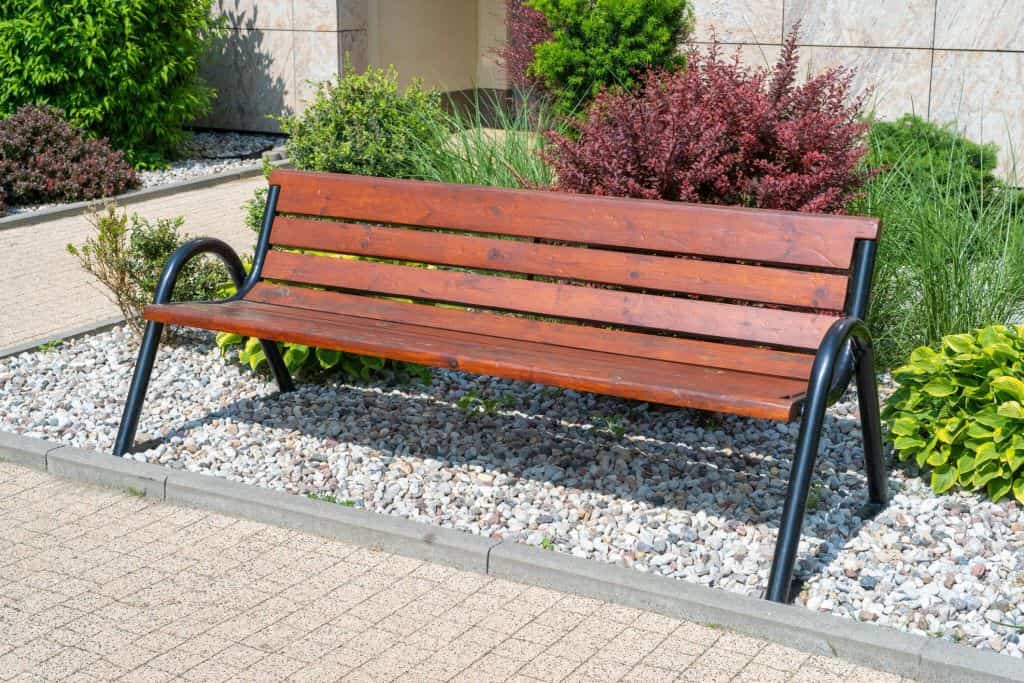Healing gardens have emerged as integral components of healthcare environments. It offers patients, staff, and visitors a sanctuary for solace and rejuvenation amidst the clinical setting of hospitals and medical facilities.
In recent years, these therapeutic landscapes have gained recognition for their ability to enhance patient well-being and support the healing process. Among the myriad design elements that contribute to the success of healing gardens, is decorative gravel landscaping. It stands out as a versatile and aesthetically pleasing option.
At the intersection of nature and healthcare, healing gardens embody the principles of biophilic design, which emphasize the innate human connection to the natural world.
The Therapeutic Potential of Healing Gardens
The therapeutic potential of healing gardens lies in their ability to create tranquil and nurturing environments that support the physical, emotional, and psychological well-being of individuals.
Creating Tranquil Spaces
Healing gardens, also known as therapeutic gardens or restorative landscapes, are designed to promote relaxation, reduce stress, and enhance overall well-being.
These outdoor spaces offer a retreat from the clinical environment of hospitals, providing patients, families, and healthcare workers with a serene setting for respite and reflection.

Integrating Nature into Healthcare
The concept of biophilia, which suggests that humans have an innate connection to nature, underpins the design of healing gardens.
By incorporating natural elements such as plants, water features, and natural materials like decorative gravel, these spaces aim to reconnect individuals with the healing power of the outdoors.
Supporting Physical and Emotional Healing
Research has shown that exposure to nature can have a range of positive effects on health outcomes. From reducing blood pressure and pain levels to improving mood and cognitive function, spending time in green spaces has been linked to various therapeutic benefits.
Healing gardens serve as an extension of this natural healing environment, offering patients a place to find solace and support their recovery journey.
Biophilic Design
Rooted in the concept of biophilia, healing gardens integrate natural elements into their design to enhance human health and well-being.
By creating environments that mimic natural landscapes, these gardens foster a sense of connection with the natural world, which has been linked to improved health outcomes.
The Role of Decorative Gravel Landscaping
Decorative gravel landscaping plays a multifaceted role in enhancing outdoor spaces, particularly in healthcare settings. Here’s a deeper look into its significance:
- Versatility in Design: Discover the boundless design possibilities with decorative gravel from landscaping supplies direct limited. Its diverse range of colors, sizes, and shapes enables designers to tailor outdoor landscapes to specific aesthetic preferences and functional requirements.
- Low Maintenance Requirements: One of the most notable advantages of decorative gravel landscaping is its minimal maintenance needs. Unlike traditional grass lawns or high-maintenance gardens, gravel landscapes require little watering, mowing, or pruning.
It makes them cost-effective and environmentally sustainable solutions for healthcare facilities seeking to create inviting outdoor environments.

- Durability and Longevity: Decorative gravel is renowned for its durability and longevity, making it an ideal choice for high-traffic areas such as hospital courtyards and pathways. Resistant to wear and tear, gravel landscapes maintain their aesthetic appeal over time, ensuring lasting beauty and functionality for patients, staff, and visitors to enjoy.
- Water Management: Gravel landscapes contribute to effective water management by allowing for natural drainage and infiltration. Unlike impermeable surfaces such as concrete or asphalt, gravel allows rainwater to percolate into the soil, replenishing groundwater supplies and reducing the risk of flooding or erosion in healthcare settings.
Benefits for Patients, Staff, and Visitors
In essence, healing gardens with their decorative gravel landscaping offer far more than just a scenic backdrop. Here are some benefits of it:
Stress Reduction
The soothing qualities of healing gardens, combined with the calming. They are effects of natural elements like decorative gravel and can help reduce stress and anxiety for patients, staff, and visitors.
Studies have shown that spending time in outdoor environments can lead to lower cortisol levels and greater feelings of relaxation. It can be particularly beneficial in the high-stress environment of healthcare settings.
Promoting Physical Activity
Healing gardens are designed with pathways and seating areas. It encourages movement and physical activity, which is essential for both patients and staff. For patients recovering from illness or surgery, walking in the garden can aid in rehabilitation and improve mobility.
Similarly, healthcare workers can benefit from taking short breaks outdoors, helping to reduce fatigue and prevent burnout.
Enhancing Overall Well-being
Finding a moment of tranquility amidst a busy day, these outdoor sanctuaries play a vital role in supporting holistic healing and care.
By providing a welcoming outdoor space for reflection and connection with nature, and healing gardens. It contributes to the overall well-being of patients, staff, and visitors. Whether it’s enjoying a breath of fresh air, or taking in the sights and sounds of the garden.

Educational Opportunities
Healing gardens can also serve as educational resources, providing opportunities for patients, staff, and visitors to learn about plants, gardening, and sustainability.
Interactive elements such as signage, interpretive displays, and guided tours can enhance the educational value of these spaces. It empowers individuals to make healthier choices and engage with their environment in meaningful ways.
Conclusion
Incorporating decorative gravel landscaping into healing gardens offers healthcare facilities a cost-effective, sustainable, and aesthetically pleasing solution for enhancing outdoor spaces. As the importance of holistic healthcare continues to gain recognition. The integration of healing gardens with decorative gravel landscaping will likely become increasingly prevalent in healthcare design. Through thoughtful planning and design, these outdoor sanctuaries have the power to transform healthcare environments. And it also contributes to better outcomes for all.









